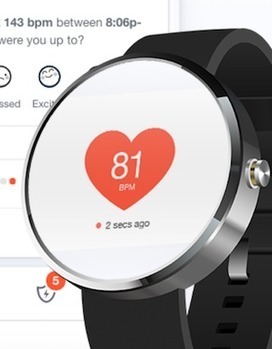Passive Detection of Atrial Fibrillation Using a Commercially Available Smartwatch-JAMA Cardiology

Importance Atrial fibrillation (AF) affects 34 million people worldwide and is a leading cause of stroke. A readily accessible means to continuously monitor for AF could prevent large numbers of strokes and death.
Objective To develop and validate a deep neural network to detect AF using smartwatch data.
Design, Setting, and Participants In this multinational cardiovascular remote cohort study coordinated at the University of California, San Francisco, smartwatches were used to obtain heart rate and step count data for algorithm development. A total of 9750 participants enrolled in the Health eHeart Study and 51 patients undergoing cardioversion at the University of California, San Francisco, were enrolled between February 2016 and March 2017. A deep neural network was trained using a method called heuristic pretraining in which the network approximated representations of the R-R interval (ie, time between heartbeats) without manual labeling of training data. Validation was performed against the reference standard 12-lead electrocardiography (ECG) in a separate cohort of patients undergoing cardioversion. A second exploratory validation was performed using smartwatch data from ambulatory individuals against the reference standard of self-reported history of persistent AF. Data were analyzed from March 2017 to September 2017.
Main Outcomes and Measures The sensitivity, specificity, and receiver operating characteristic C statistic for the algorithm to detect AF were generated based on the reference standard of 12-lead ECG–diagnosed AF.
Results Of the 9750 participants enrolled in the remote cohort, including 347 participants with AF, 6143 (63.0%) were male, and the mean (SD) age was 42 (12) years. There were more than 139 million heart rate measurements on which the deep neural network was trained. The deep neural network exhibited a C statistic of 0.97 (95% CI, 0.94-1.00; P < .001) to detect AF against the reference standard 12-lead ECG–diagnosed AF in the external validation cohort of 51 patients undergoing cardioversion; sensitivity was 98.0% and specificity was 90.2%. In an exploratory analysis relying on self-report of persistent AF in ambulatory participants, the C statistic was 0.72 (95% CI, 0.64-0.78); sensitivity was 67.7% and specificity was 67.6%.
Conclusions and Relevance This proof-of-concept study found that smartwatch photoplethysmography coupled with a deep neural network can passively detect AF but with some loss of sensitivity and specificity against a criterion-standard ECG. Further studies will help identify the optimal role for smartwatch-guided rhythm assessment.
from Tumblr https://ift.tt/2G9Y324
via IFTTT